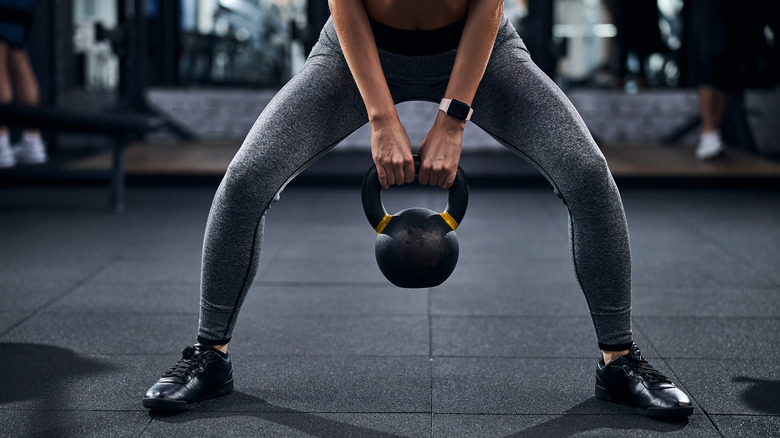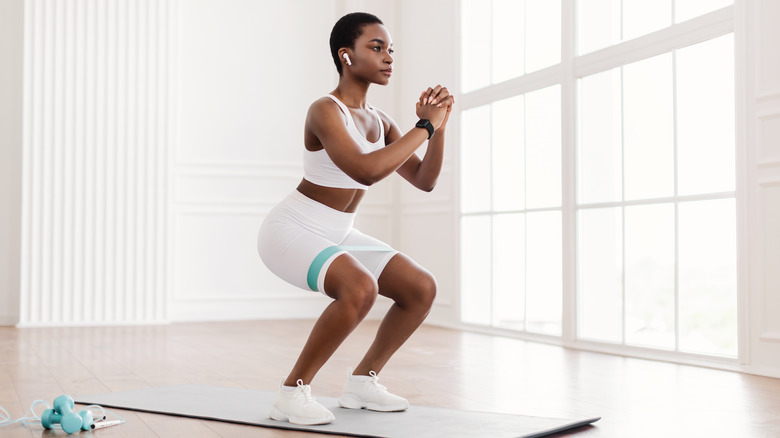Squats Versus Sumo Squats: Which Is Better For Your Glutes?
Squats are one of the most common exercises out there. All squat variations work your lower body, but different kinds of squats target slightly different muscles in your legs and glutes. If you want to work on your glutes, a sumo squat is a great way to target those muscles. These are performed like a traditional squat except your feet are placed further apart and your toes are pointed slightly outward (via Byrdie). According to the chief fitness officer for The DB Method and a certified IART fitness clinician Adam Swartz, because of this wider stance, "you really have to fire up the outer glutes, otherwise, the knees will cave in, which is not good."
While the glutes are used in traditional squats, these muscles have to work even harder during sumo squats to keep your body aligned while performing the movement. Sumo squats are also great for targeting the inner thighs and improving hip mobility. Don't skip this exercise if you want to work your glutes.
How to squat without hurting your knees or back
While squats are an excellent exercise, many people struggle with them because of pain in their backs and knees. If you are injury-free and healthy, you should not experience pain when performing a squat. Squats can actually improve knee and back pain when incorporated into your fitness routine (via Byrdie). To protect your knees when squatting, be sure to keep your spine neutral and don't let your knees collapse in or out.
A lack of hip mobility can also cause pain when squatting (via Be Balanced PT). If you only feel pain when you go into a deep squat, try squatting without going as low. With lots of practice and plenty of stretching after workouts, you will be able to squat lower without pain. If you seem to feel pain anywhere in your body when squatting, consider hiring a personal trainer or visiting a physical therapist. They can make sure that your form is correct and help you find the best ways to exercise for your needs.


